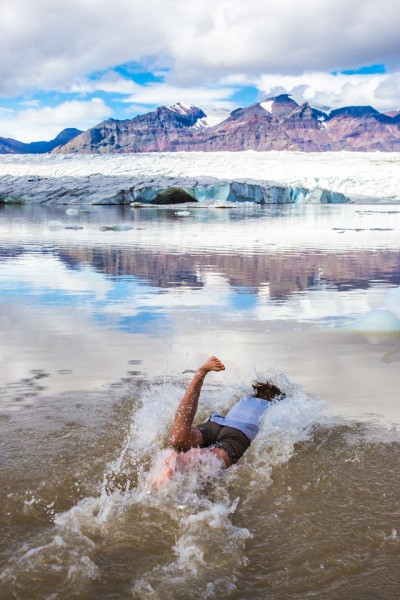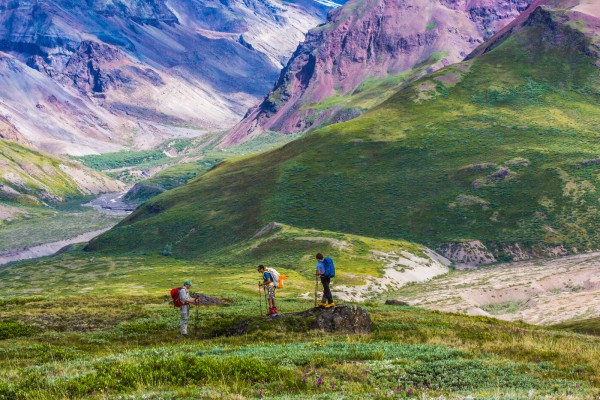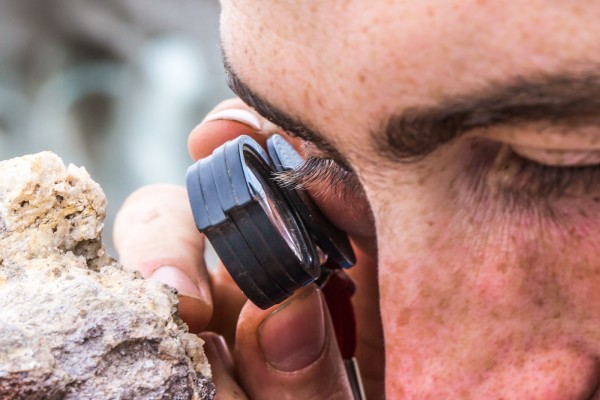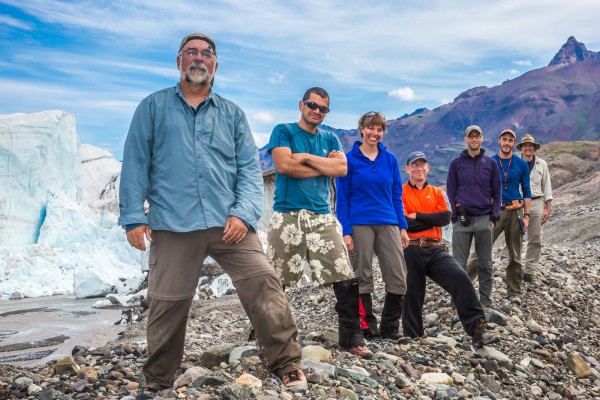The mysterious Wrangells offer a clue to Earth then and now
July 17, 2015
Meghan Murphy
907-474-7541

If you drive down to Valdez for a vacation or catch salmon in the Chitina River, then know this: the Wrangell Mountains that rise high on the horizon are bizarre. They are like a mystery whose possible solutions always leave room for doubt.
The Wrangell Mountains are a chain of volcanoes in Wrangell-St Elias National Park and Preserve. You would think the answer as to how these volcanoes formed or how the geologic processes around them worked would be an easy one. They are similar to other chains of volcanoes like the ones forming the Aleutian Islands, and scientists know a lot about how these chains form.
If you do a connect-the-dots with the Wrangell Mountains or the volcanoes of the Aleutian Islands, the Mariana Islands or those of Japan, you would see that they form an arc. What these volcanic arcs represent is where the ocean plate below the Pacific Ocean is going under the different continents.
This plate, called the Pacific Plate, eventually curves and bends down into the mantle, a layer inside the Earth that is hotter and softer than the plates under the oceans and continents. As this happens, the Pacific Plate develops fractures and triggers earthquakes in itself and where it contacts the upper, continental plate. The largest earthquakes ever recorded are around volcanic arcs.
As the Pacific Plate moves down, ocean water seeps into the mantle and stirs things up. This causes parts of the mantle to melt into magma. If conditions are right, this magma erupts through the ocean or through fissures in the Earth’s crust and builds volcanoes. This is most prominent around the Pacific Ocean in what has been called the “Ring of Fire.”
The Wrangell Mountains sit over where the Pacific Plate should be arcing down into the mantle. But "should" is the key word. We know the Pacific Plate is definitely trying to slip under Alaska near the Wrangell Mountains. But then the plate seems to disappear.
Although the plate may very well be there, something else is missing — earthquakes. An earthquake map shows that thousands and thousands of earthquakes happen along the other volcanic arcs. In fact, look no farther than the area between Kenai and Anchorage, where the Pacific Plate is at work. Thousands of earthquakes happen in that area but then abruptly stop when reaching the Wrangell Mountains.

The lack of earthquakes makes it much harder for scientists to “see” what’s going on underneath the volcanoes. Lacking the X-ray powers of Superman, scientists image the Pacific Plate by analyzing the waves earthquakes send up. These waves also help scientists map out those zones where the plate is going under different continental plates. Since there are hardly any earthquakes in the Wrangell Mountains, scientists cannot “see” what’s going on underneath them.
And here’s another weird thing: Most volcanoes along an arc are generally similar in age, like in the Aleutians. However, in the Wrangell Mountains, volcanoes appear to get younger as you go from east to west. In the east, the volcanoes erupted about 25 million years ago, while in the west, near Mount Drum, the last volcanism, or eruption, was only about 200,000 years ago. So when you drive down the Richardson Highway, you’re seeing the “young blood” of volcanoes.
Now add a big, complicating factor to this whole scenario. There is a huge crash going on right now because of a hump on the Pacific Plate that is trying to slip under Alaska in the Wrangell Mountain area. The “hump” is due to a massive block of rock that has been carried along by the Pacific Plate. It is about 100 miles wide and about 15 miles thick (the Pacific Plate is about 5 miles thick). It has already been pushed under the edge of Alaska. It is not clear how far under Alaska it has traveled, but it is certainly clogging up the system. Because of this, not all of it can slip under Alaska. Instead, it’s pushing against the state, acting like a giant snowplow that is crumpling and denting the land and possibly contributing to events like the 2002 Denali earthquake, which could be felt all the way in Seattle.

This “hump” is called the Yakutat Block. It’s possible that as it’s jamming against Alaska, a part of it has slipped underneath between the mantle layer (the source of magma) and our state. Yet the magma may still able to leak up through fissures and faults. The hump could also be slowing the Pacific Plate down, which would mean fewer earthquakes. But these are just some of the many ideas scientists are now studying.
You’re probably thinking, “Why do we care about this, other than that it is pretty bizarre, right?” Well, understanding the geologic processes of the area will better help us understand the likelihood and magnitude of earthquakes, tsunamis and volcanic eruptions. While most of the volcanoes in the Wrangell Mountains aren’t currently active, that could change because they have been erupting for the last 25 million years.
A large group of scientists, including myself, are studying the geologic processes at work with the volcanoes. I am a geochronologist who studies the timescales embedded in rocks to see what the timescales can tell me about how the Earth has and is forming. I am also the dean of the college of natural science and mathematics at the University of Alaska Fairbanks.
I went on a research expedition into Wrangell-St. Elias National Park and Preserve with my colleague and former student, Jeff Benowitz. He runs the geochronology lab at UAF’s Geophysical Institute. His crew included Kailyn Davis, a CNSM geosciences undergraduate, and Todd Paris, a UAF photographer who was along for a few days to record our scientific adventure. Several researchers and collaborators from Kansas State University and Bucknell University were also on the trip.

Together, we collected rock samples that would help us better answer some questions: “When did volcanism in this area start? How long does it take for a volcano like Mt. Wrangell to grow? How does the Denali Fault relate to these mountains?”
While the UAF team is looking into those questions through geochronology, the KSU and Bucknell teams are looking at them through the chemistry and geology of the rocks. Although the area was previously mapped, we are doing more detailed studies of the area with new techniques — and we discovered a bonus. The receding glaciers have exposed some new rock that will provide insights into how and when volcanism started.
I like this research because it’s in a place where there is a little information about it, but not a lot. And it has some very strange behavior relative to things we think we understand better. For me, the Wrangell Mountains have it all. So I hope that the next time you see their topographic highs, you view them with a renewed interest and awe. After all, whatever is affecting them is affecting all of us.
ADDITIONAL CONTACTS: Paul Layer, dean of the College of Natural Science and Mathematics, pwlayer@alaska.edu,
ON THE WEB: http://bit.ly/FDNMWrangells


